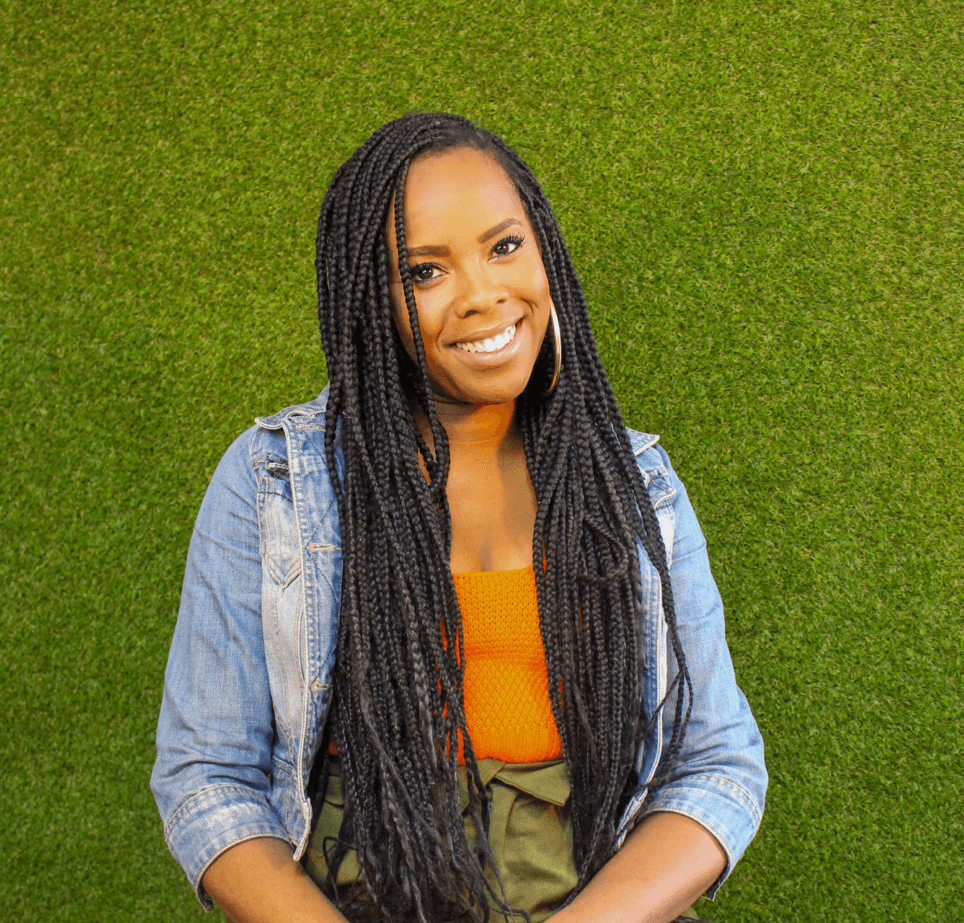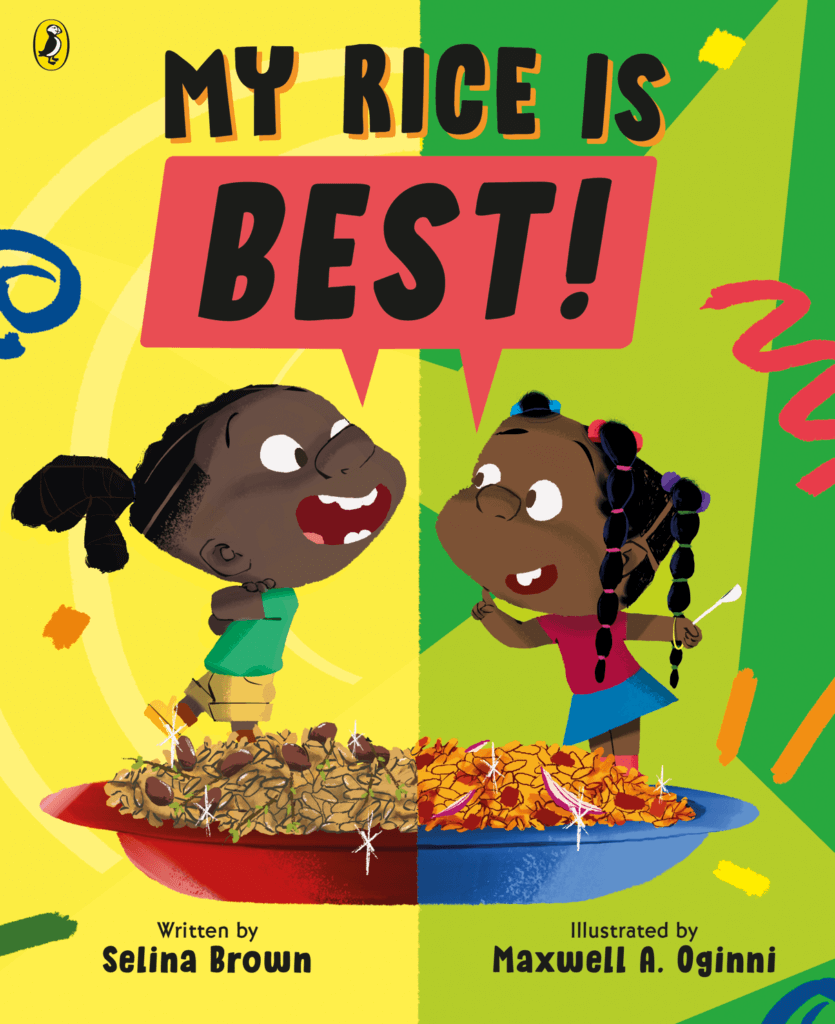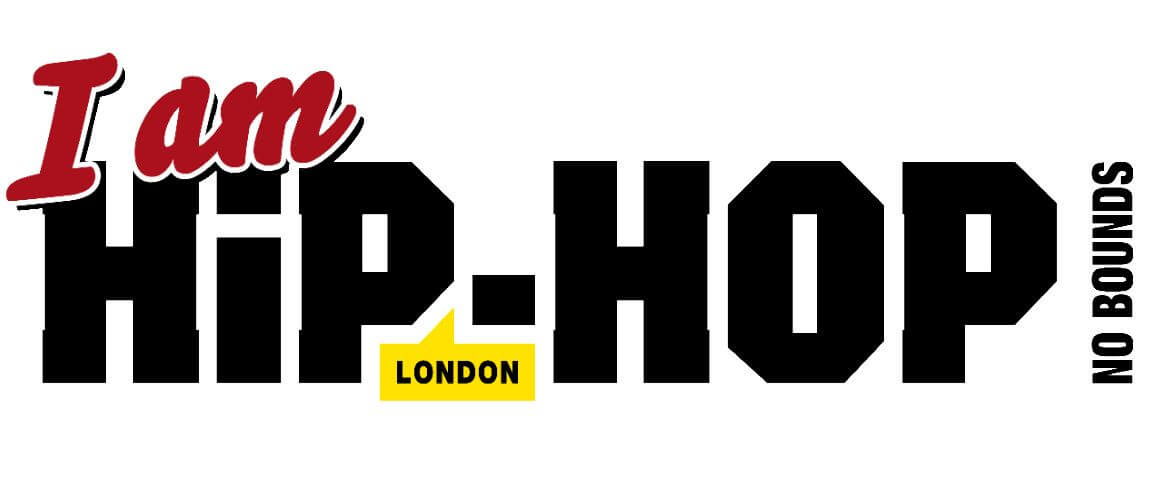
Selina Brown is a powerhouse in children’s literature and a passionate advocate for representation in publishing. As the founder of the Black British Book Festival and the acclaimed author behind the Nena series, she has already inspired a new generation of readers and writers. Now, with her latest picture book ‘My Rice is Best’, Selina delivers a joyful, mouthwatering celebration of culture, family, and pride, all through the universal language of food. We caught up with Selina to talk about the inspiration behind the story, the playful rivalry between Caribbean and African rice dishes, and why sharing laughter, identity, and tradition is at the heart of everything she writes.
‘My Rice is Best’ is such a vibrant celebration of culture and food. What sparked the idea for this story, and why rice in particular?
I wanted to write something that felt like a true celebration – of family, food, and culture. My Rice is Best! was inspired by the age-old debate between Caribbeans and Africans: who makes the best rice? It’s a playful rivalry, but also full of pride – because in every family, there’s always that one dish that means something special. Rice shows up in so many homes around the world in unique, delicious ways. I wanted to capture that warmth, flavour and generational love – and show children championing their heritage while learning about others through food.
Shane and Yinka’s rice rivalry feels playful but powerful. How important was it for you to show cultural pride in such a fun, accessible way for kids?
It was absolutely essential. Cultural pride doesn’t have to be serious or heavy – sometimes, the best way to explore identity is through laughter, curiosity, and fun. By showing Shane and Yinka proudly defending their family rice recipes, I’m encouraging children to celebrate where they come from and take joy in sharing that with others. The rivalry is cheeky, but it’s rooted in love – and that playful pride opens the door for empathy, connection, and understanding.
You’ve lived in places like New York, Jamaica, Kenya and Gambia. Did any of your travels influence how you shaped the food and cultural themes in the book?
Definitely. Living in different parts of the world gave me a deep appreciation for how food tells a story. Whether I was eating jollof in West Africa, rice and peas in the Caribbean, or soul food in Brooklyn, the message was the same: food is community. It’s how people celebrate, grieve, gather, and connect. Those experiences helped me understand the emotional layers behind a dish – and I wanted to bring that richness into the book. For children, food is such an accessible entry point to culture, and I wanted them to feel proud of their own while getting curious about others.
We love the boldness and joy in the illustrations. What was it like collaborating with Maxwell Oginni, and how did his visual style bring your words to life?
Working with Maxwell was great. He brought such energy, warmth, and humour to every page. From the expressive faces to the vibrant colour palettes, his illustrations made the story jump off the page. He really understood the rhythm of the text – the joy, the tension, the comedy – and elevated it with art that children can get lost in. Maxwell captured the essence of both Shane and Yinka’s worlds beautifully, and I’m so proud of what we created together.
There’s something powerful about children seeing their food, culture and family life reflected in books. What do you hope young readers feel when they see themselves in ‘My Rice is Best’?
Representation is vital. When children see themselves in books, they feel validated – like their world, their family, their voice matters. It builds confidence, identity, and creativity.
But it’s also important for every child to experience diverse stories – that’s how we raise inclusive, empathetic people. We need to keep championing diverse authors, pushing for authentic stories, and making sure all children can access books that reflect the full spectrum of experiences.
As founder of the Black British Book Festival, you champion Black voices in publishing. How does this book fit into your mission of representation and storytelling?
My Rice is Best! is part of that mission – to center joy, pride, and cultural authenticity in our storytelling. The Black British Book Festival was born out of a need to showcase the incredible range of Black talent in literature, and this book is a celebration of that spirit. It’s not about trauma or stereotypes – it’s about kids being kids, families being families, and cultures being honoured in their everyday brilliance. That’s the kind of storytelling we need more of, and it’s what I’m committed to building through the festival and beyond.
Rice is clearly more than just food in this story – it’s tradition, identity, even love. What does rice mean to you personally?
To me, rice is comfort. It’s Sunday dinners, family arguments about who gets the last scoop, the smell of coconut milk or scotch bonnet drifting through the house. It’s memories of my Jamaican grandmother in the kitchen, teaching me about life between stirring the pot. Rice is love, laughter, and legacy – and that’s exactly what I wanted to honour in this book.
Humour plays a big role in the book. How important is laughter in helping children learn about cultural differences and similarities?
Laughter is a powerful tool. It breaks down walls, opens hearts, and helps children connect across differences. Humour makes things relatable and memorable – especially when tackling cultural topics. When kids can laugh together at a rice debate, they’re also learning about pride, respect, and appreciation for each other’s backgrounds. The humour in this book invites children to celebrate difference, not fear it.
You’ve already inspired many with the “Nena” series and your work empowering young girls. What message does ‘My Rice is Best’ send to the next generation of storytellers?
That your story matters. That your culture, your voice, your family traditions – they all belong in books. My Rice is Best! says: be proud of who you are, share your world boldly, and never feel like you have to shrink your identity to fit in. I hope young readers come away thinking, “I could write a book like this too.” Because they can – and I want them to know the world needs their stories.
And finally, the million-pound question: rice and peas or jollof? Or are you staying neutral to keep the peace?
Let’s just say… I’ve had very good versions of both! However, rice and peas has my heart – especially when it was cooked by my granny who didn’t measure anything and just “knew” when it’s done. That’s ancestral cooking – you can’t compete with that!
My Rice Is Best is available in all bookstores from May 8th 2025

Mark Mukasa
Latest posts by Mark Mukasa (see all)
- INTERVIEW | SELINA BROWN ON FAMILY, FOOD AND CULTURAL PRIDE IN HER NEW CHILDREN’S BOOK ‘MY RICE IS BEST’ — April 28, 2025
- EUROPEAN PREMIERE OF ‘PIECE BY PIECE’ STARRING PHARRELL WILLIAMS TO CLOSE THE 68TH BFI LONDON FILM FESTIVAL — August 20, 2024
- INTERVIEW | ILLUSTRATING INCLUSIVITY… A CONVERSATION WITH JOELLE AVELINO ON BRINGING HER BOOK ‘A BOOK FOR PEOPLE LIKE ME’ TO LIFE — August 9, 2024
